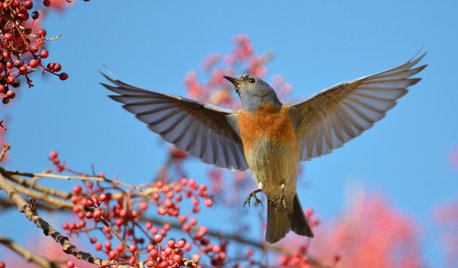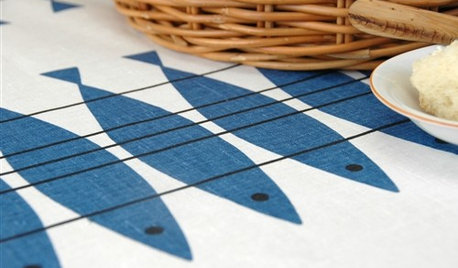sea berries
beluga01
14 years ago
Related Stories

GARDENING GUIDESGreat Design Plant: Sambucus Nigra
Common elderberry is a highly adaptable shrub from the eastern U.S., with berries galore for wildlife and humans alike
Full Story
FARM YOUR YARDHouzz Call: Home Farmers, Show Us Your Edible Gardens
We want to see where your tomatoes, summer squashes and beautiful berries are growing this summer
Full Story
EDIBLE GARDENSHow to Grow Your Own Sweet Summer Crops
This guide will help any gardener get started on growing the freshest warm-season veggies and berries for summer
Full Story
GARDENING GUIDESHow to Bring the Joy of Bluebirds to Your Garden
Attract these beautiful songbirds with nesting habitat and food sources, including berry-producing trees and shrubs
Full Story
SHOP HOUZZHouzz Products: Summer Color for the Patio
Set a sunny, happy outdoor scene with accessories and furniture in sea blue and sunset orange
Full Story
COASTAL STYLEGuest Picks: The Coastal Kitchen
When summer heat means your kitchen is like ... er, an oven, let these pieces bring in the freshness of a sea breeze
Full Story
COLORHot Uses for Red Around the House
Spark some excitement from the front door to the back bedroom by bringing in this sultry, sexy color
Full Story
MOST POPULARHouzz Call: Show Us Your Winter View!
Share pictures of your home and garden in winter — whatever your climate, architecture and plantings
Full Story
DECORATING GUIDESEverything's Coming Up Coral
Red-Orange Accents Give a Home a Beach-Sunset Glow
Full Story
DECORATING GUIDESColor Guide: How to Use Light Blue
Whether you call it powder, sky or baby blue, this ultratraditional color lends fresh-faced appeal
Full StoryMore Discussions









hemnancy
Embothrium
Related Professionals
Camas Landscape Architects & Landscape Designers · Cupertino Landscape Contractors · Dickinson Landscape Contractors · Fuquay-Varina Landscape Contractors · McLean Landscape Contractors · Merced Landscape Contractors · Plantation Landscape Contractors · Ridgewood Landscape Contractors · Salem Landscape Contractors · Winter Gardens Landscape Contractors · Agoura Hills Fence Contractors · Berkeley Fence Contractors · Novato Fence Contractors · Sunrise Manor Fence Contractors · Troutdale Fence Contractorslarry_gene
hvaldez
beluga01Original Author
larry_gene
beluga01Original Author
larry_gene
Dros68
lilydude
Dros68
Lena M
larry_gene
hemnancy
larry_gene